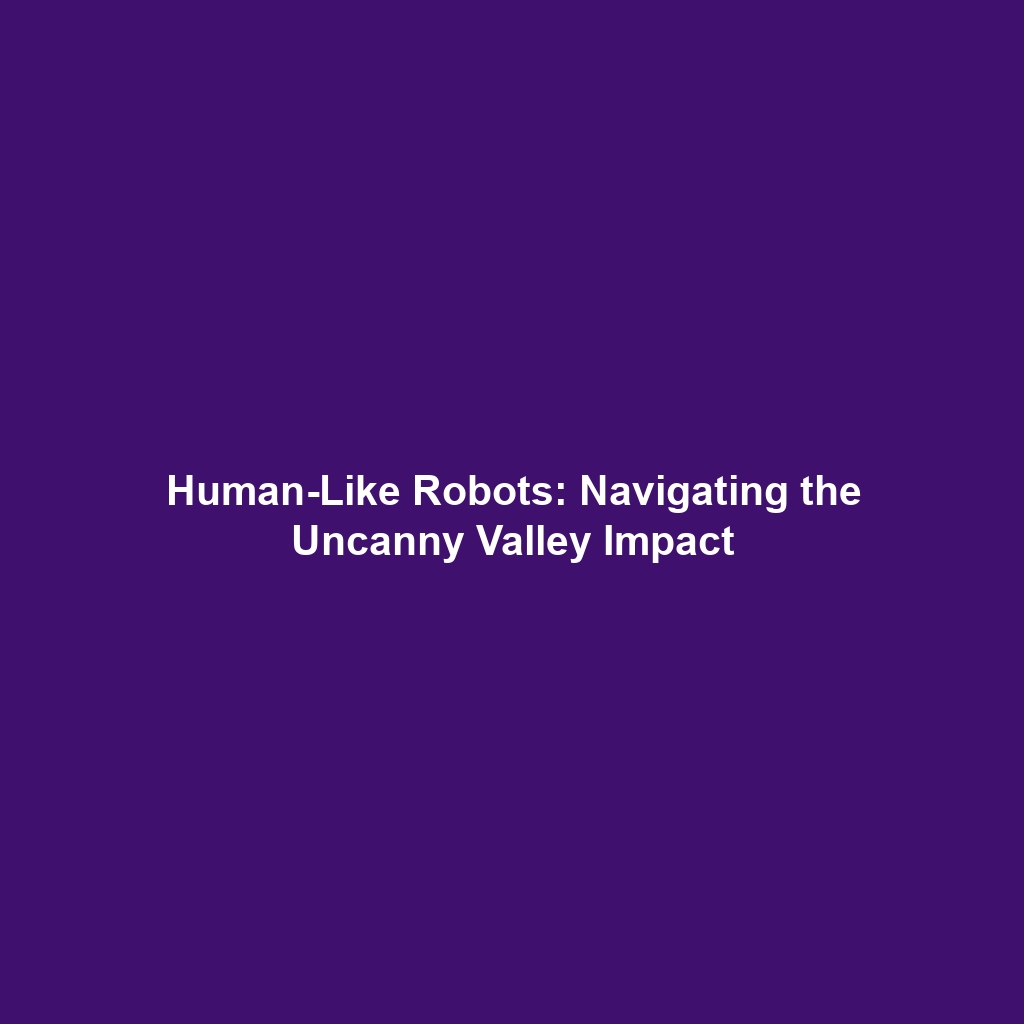Next-Generation Humanoids: The Future of Human-Like Robots
As technology rapidly evolves, the prospect of Next-Generation Humanoids is becoming increasingly influential within the realm of humanoid robots. These innovative, human-like robots are anticipated to greatly enhance human-robot interaction, making them more practical and integral to various sectors. This article delves into the significance of Next-Generation Humanoids, exploring their key concepts, real-world applications, current challenges, and future research opportunities.
Key Concepts of Next-Generation Humanoids
Next-Generation Humanoids encompass several key concepts that enhance their functionality and interaction capabilities. These include:
- Advanced AI Integration: Utilizing machine learning and artificial intelligence to facilitate human-like communication.
- Physical Dexterity: Improved mechanics that allow for more fluid and natural movements, mimicking human gestures.
- Emotion Recognition: The ability to perceive and respond to human emotions through facial and vocal analysis.
These principles not only define what Next-Generation Humanoids are but also significantly advance the field of humanoid robots as a whole.
Applications and Real-World Uses
The practical applications of Next-Generation Humanoids are vast and varied, demonstrating their potential to revolutionize numerous domains. Significant uses include:
- Healthcare: Serving as companions for the elderly or patients, aiding in mental health therapy.
- Education: Acting as teaching assistants that provide personalized learning experiences.
- Customer Service: Enhancing customer interactions in retail environments by providing information and assistance.
Understanding how Next-Generation Humanoids are used in these contexts showcases the evolving role of humanoid robots in society.
Current Challenges Facing Next-Generation Humanoids
Despite their promising capabilities, there are several challenges of Next-Generation Humanoids that must be addressed:
- Ethical Concerns: Issues surrounding privacy, consent, and the psychological impact of human-robot interactions.
- Technical Limitations: Constraints in robotics technology, including battery life, mobility, and sensory perception.
- Acceptance and Trust: Gaining public trust in the reliability and safety of humanoid robots.
Future Research and Innovations
The future of Next-Generation Humanoids lies in ongoing research and technological advancements. Potential innovations include:
- Enhanced AI Capabilities: Developing more nuanced understanding and interactions.
- Improved Materials: Using lightweight and durable materials for better mobility and efficiency.
- Collaboration with IoT: Integrating humanoid robots with the Internet of Things for intelligent environments.
Such breakthroughs are likely to propel the field of humanoid robots into new frontiers, creating opportunities for further research.
Conclusion
In conclusion, the exploration of Next-Generation Humanoids reveals their critical role in shaping the future of humanoid robots. As these technologies evolve, they will become increasingly embedded in everyday life, enhancing interactions and improving functionality across various sectors. For those interested in robotics and technology, staying informed on these developments is crucial.
For further reading, check out our articles on AI in Robotics and Robotic Assistants in Healthcare.









